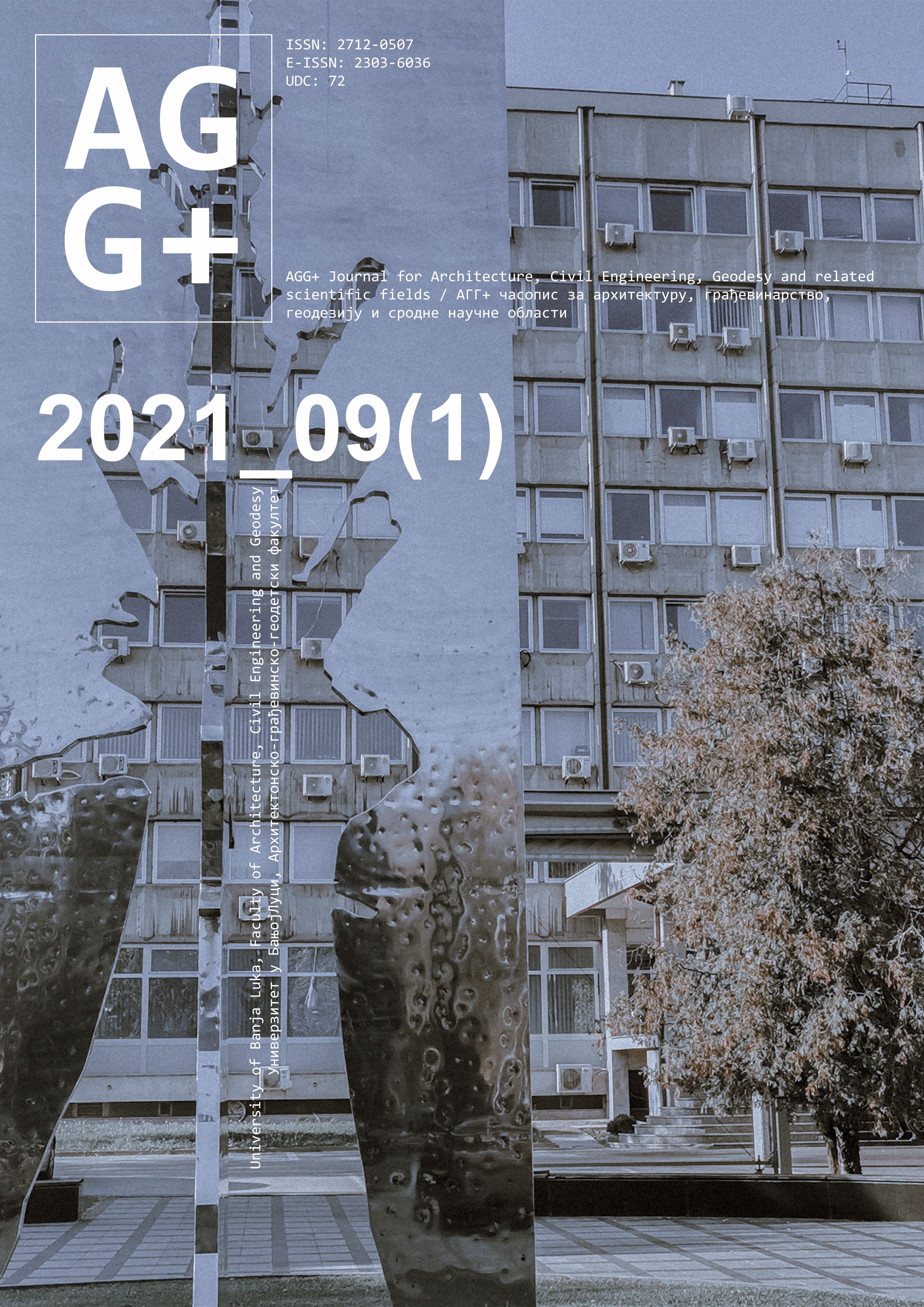The Influential Factors in Improving the Spatial Abilities of Architecture Students
DOI:
https://doi.org/10.7251/AGGPLUS/2109002KKeywords:
spatial abilities, descriptive geometry, architecture, statistical analysisAbstract
In this paper, the factors that influence the improvement of spatial abilities of architecture students were examined. The main question was whether the course in Descriptive Geometry at the Faculty of Architecture, Civil Engineering, and Geodesy at the University of Banja Luka had an impact on students' spatial abilities. The study examined 118 students of the first year comparing their success at Spatial Ability tests in relation to whether they attended the Descriptive Geometry course. The obtained results of the study showed a significant improvement in students' spatial abilities in general and that the Descriptive Geometry course did not have a substantial influence on spatial abilities development. The SPSS v.20 analytical-statistical software package is used for the statistical analysis.
References
S. A. Sorby and G. C. Panther, "Is the key to better PISA math scores improving spatial skills," Mathematics Education Research Journal, vol.32, pp. 213-233, 2020.
T. Lowrie, T. Logan, M. Hegarty, "The Influence of Spatial Visualization Training on Students' Spatial Reasoning and Mathematics Performance," Journal of Cognition and Development, vol. 20, pp. 729-751, 2019.
G. Marunić and V. Glažar, "Improvement and assessment of spatial ability in engineering education," Engineering Review, vol. 34, no. 2, pp. 139-150, 2014.
M. Ilić, S. Kosić-Jeremić, M. Stavrić, "Descriptive Geometry and Spatial Ability Correlation and Mutual Impact at Engineering Students," Tehnički vjesnik-Technical Gazette, vol. 27, no. 6, pp. 2001-2007, 2020.
M. Hegarty," Components of Spatial Intelligence," Psychology of Learning and Motivation, vol. 52, pp. 265-297, 2010.
G. Maresch, "How to Develop Spatial Ability? Factors, Strategies, and Gender Specific Findings," J. Geom. Graph., vol. 19, no. 1, pp. 133–157, 2015.
S. A. Sorby, "Developing 3D spatial skills for engineering students," Australasian Journal of Engineering Education, vol. 13, pp. 1-11, 2007.
S. A. Sorby, "Educational Research in Developing 3-D Spatial Skills for Engineering Students," International Journal of Science Education, vol. 31, no. 3, pp. 459-480, 2009.
M. Ilić and S. Kosić-Jeremić, "Can Spatial Ability be Trained-The Analysis of Preparatory Course for Enrolment at the Faculty of Architecture," in International Conference on Contemporary Theory and Practise in Construction XIV, 2020, pp. 318-329.
C. Leopold, "Geometry Education for Developing Spatial Visualization Abilities of Engineering Students," The Journal of Polish Society for Geometry and Engineering Graphics, vol. 15, pp. 39-45, 2005.
S. G. Vandenberg and A. R. Kuse, "Mental rotations, a group test of three-dimensional spatial visualization," Perceptual and Motor Skills, vol. 47, pp. 599-604, 1978.
E. Tsutsumi, H.-P. Schröcker, H. Stachel, G. Weiss, "Evaluation of Students' Spatial Abilities in Austria and Germany," Journal for Geometry and Graphics, vol. 9, no. 1, pp. 107-117, 2005.
Lj. Preradović and V. Đajić, Analitičko-statističke tehnike u savremenim istraživanjima, Banja Luka, Arhitektonsko-građevinski fakultet Univerziteta u Banjoj Luci, 2011.

